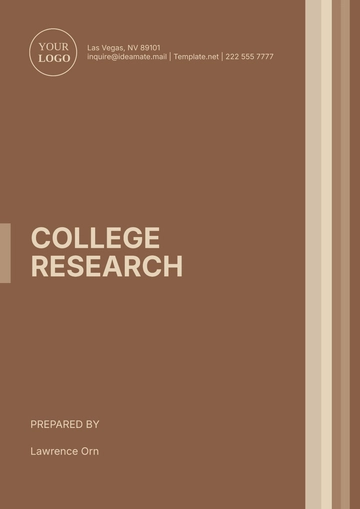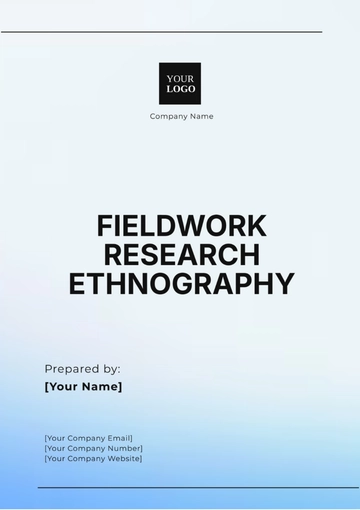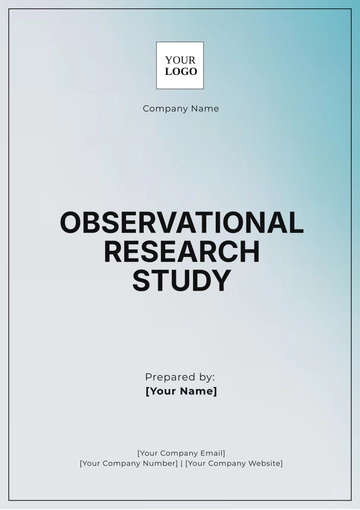Free Psychology Research

Prepared by: [Your Name]
I. Introduction
Prejudice, the preconceived notion of individuals or groups based on stereotypes or incomplete information, stands as a formidable barrier to societal harmony and progress. Its roots delve deep into the human psyche, shaping attitudes, behaviors, and societal structures. The intricate interplay of cognitive biases, social categorization, and cultural influences perpetuates prejudice, fostering discrimination and inequality across various domains. Despite progress in civil rights movements and increasing awareness, prejudice continues to manifest in overt and covert forms, undermining efforts toward inclusivity and social justice. Understanding the psychology of prejudice is paramount to devising effective strategies for social change. By unraveling its mechanisms, deciphering its impacts, and leveraging evidence-based interventions, we can strive towards a more equitable and compassionate society.
Prejudice is not merely a product of individual attitudes but is deeply embedded within social structures and institutions. Historical legacies of colonization, slavery, and systemic oppression have entrenched inequalities along lines of race, gender, ethnicity, religion, and other social identities. These structural inequities perpetuate cycles of disadvantage and privilege, shaping access to resources, opportunities, and power. Moreover, technological advancements and globalization have facilitated the rapid spread of information, amplifying both positive narratives of diversity and negative stereotypes. In this complex landscape, the psychology of prejudice offers insights into the underlying drivers and dynamics, guiding efforts to dismantle barriers, foster empathy, and promote social cohesion.
II. Psychological Mechanisms of Prejudice

A. Implicit Bias
Implicit biases are unconscious attitudes or stereotypes that influence our judgments and behaviors. These biases often operate without conscious awareness, shaping how we perceive and interact with others. Research by Greenwald and Banaji (1995) has shown that implicit biases can lead to discriminatory actions even among well-intentioned individuals.
B. Social Categorization
Social categorization is a cognitive process through which individuals classify others into social groups based on salient characteristics such as race, gender, or nationality. This tendency to categorize can foster in-group favoritism and out-group discrimination. Studies by Tajfel and Turner (1979) have demonstrated how social categorization contributes to the formation and maintenance of prejudice.
C. Stereotype Formation and Maintenance
Stereotypes are oversimplified beliefs or judgments about a particular group of people. These stereotypes, often based on limited or inaccurate information, can shape perceptions and interactions, leading to prejudice and discrimination. Fiske et al. (2002) have highlighted the role of media, socialization, and intergroup contact in perpetuating stereotypes.
III. Impacts of Prejudice
A. Psychological Effects
Prejudice can have profound psychological effects on both the targets and perpetrators. Victims of prejudice may experience stress, anxiety, depression, and diminished self-esteem as a result of discrimination. Perpetrators, on the other hand, may experience cognitive dissonance and moral distress when their actions conflict with their egalitarian values.
B. Social and Economic Consequences
Prejudice perpetuates social and economic disparities by limiting opportunities and resources for marginalized groups. Discriminatory practices in employment, education, housing, and healthcare contribute to systemic inequalities, exacerbating poverty and social exclusion. Research by Pager and Shepherd (2008) has documented the far-reaching consequences of prejudice on individual well-being and societal cohesion.
C. Interpersonal Relationships
Prejudice undermines interpersonal relationships by fostering mistrust, hostility, and conflict between individuals and groups. Intergroup dynamics characterized by prejudice and discrimination hinder cooperation, empathy, and mutual respect, impeding efforts to build inclusive and cohesive communities.
IV. Strategies for Social Change

A. Education and Awareness
Education and awareness-raising initiatives play a crucial role in challenging stereotypes, dispelling myths, and promoting empathy and understanding across diverse groups. Allport (1954) advocates for inclusive curricula, diversity training programs, and media literacy campaigns to address prejudice and discrimination.
B. Intergroup Contact
Contact theory suggests that positive interactions between members of different groups can reduce prejudice and improve intergroup relations. Facilitating meaningful and sustained intergroup contact through collaborative activities, shared goals, and equal status relationships can promote empathy, perspective-taking, and social cohesion.
C. Policy Interventions
Policy interventions at the institutional and societal levels are essential for addressing systemic inequalities and promoting social justice. Affirmative action policies, anti-discrimination legislation, and diversity initiatives can help mitigate the structural barriers that perpetuate prejudice and exclusion.
D. Community Engagement
Community-based interventions that involve stakeholders from diverse backgrounds are crucial for fostering dialogue, building trust, and promoting collective action against prejudice. Pettigrew and Tropp (2006) support grassroots initiatives, interfaith collaborations, and restorative justice programs to empower communities and create inclusive spaces for all.
V. Conclusion
In conclusion, prejudice remains a significant challenge in contemporary society, perpetuating discrimination and inequality across various domains. However, by understanding the psychological mechanisms of prejudice and its impacts, we can devise effective strategies for social change. Through education, intergroup contact, policy interventions, and community engagement, we can dismantle barriers, foster empathy, and promote inclusivity. By working collaboratively towards a more equitable and compassionate society, we can realize the vision of a world free from prejudice and discrimination.
VI. References
Greenwald, A. G., & Banaji, M. R. (1995). Implicit social cognition: Attitudes, self-esteem, and stereotypes. Psychological Review, 102(1), 4-27.
Tajfel, H., & Turner, J. C. (1979). An integrative theory of intergroup conflict. In W. G. Austin & S. Worchel (Eds.), The social psychology of intergroup relations (pp. 33-47). Monterey, CA: Brooks/Cole.
Fiske, S. T., Xu, J., Cuddy, A. C., & Glick, P. (2002). (Dis)respecting versus (dis)liking: Status and interdependence predict ambivalent stereotypes of competence and warmth. Journal of Social Issues, 58(4), 745-760.
Pager, D., & Shepherd, H. (2008). The sociology of discrimination: Racial discrimination in employment, housing, credit, and consumer markets. Annual Review of Sociology, 34, 181-209.
Pettigrew, T. F., & Tropp, L. R. (2006). A meta-analytic test of intergroup contact theory. Journal of Personality and Social Psychology, 90(5), 751-783.
- 100% Customizable, free editor
- Access 1 Million+ Templates, photo’s & graphics
- Download or share as a template
- Click and replace photos, graphics, text, backgrounds
- Resize, crop, AI write & more
- Access advanced editor
Unlock the complexities of the human mind with our Psychology Research Template, provided by Template.net. This essential resource empowers psychologists and researchers alike to delve into various psychological phenomena. Customize it to your specific area of study, and easily download for offline access. Print for thorough review and edit seamlessly with our AI Editor Tool, ensuring precision and depth in your psychological research endeavors.





























